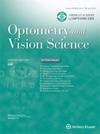年龄和种族对近视儿童轴伸长的影响:系统回顾与元回归。
IF 1.8
4区 医学
Q3 OPHTHALMOLOGY
引用次数: 0
摘要
目的轴伸长是原发性近视发展的基础,也是监测其演变的首选指标。我们对中低度近视儿童的轴伸长及其相关因素进行了元回归建模。方法使用 Ovid Medline、EMBASE 和 Cochrane Central Register of Controlled Trials 对截至 2021 年 10 月的研究进行了全面的电子系统检索。采用多变量线性混合效应元回归模型对平均轴伸长率进行分析,并向后逐步剔除不显著的协变量。结果共有 64 项研究、83 个亚人群和 142 次对平均轴向基线变化的评估符合我们的纳入标准,并且在最终模型中没有缺失的重要协变量。一项单独的分析包括了所有有轴向长度数据(202 次评估)但缺失方差或协变量数据的人群,该分析得出的模型与完整数据分析得出的模型相似。与非亚洲人相比,亚洲儿童的平均轴向伸长率高出38%(95%置信区间,19%至61%;P<0.01),但随着年龄的增长,两组儿童的平均轴向伸长率每年均下降15%(95%置信区间,12%至17%;P<0.0001)。预测区间表明,轴向伸长率估计值周围存在很大的变异性。结论这项分析提供了轴向伸长率的平均值,用于评估近视控制的效果。广泛的预测区间强调了人群中个体轴向伸长率的巨大范围,说明了管理个体儿童所面临的挑战。由于使用的是综合数据而非个体数据,因此对分析结果的解释受到了限制。本文章由计算机程序翻译,如有差异,请以英文原文为准。
Influence of age and race on axial elongation in myopic children: A systematic review and meta-regression.
PURPOSE
Axial elongation is the basis of progression in primary myopia and the preferred metric to monitor its evolution. We conducted a meta-regression to model axial elongation and its associated factors in children with low to moderate myopia.
METHODS
A comprehensive electronic systematic search was performed using Ovid Medline, EMBASE, and Cochrane Central Register of Controlled Trials of studies conducted up until October 2021. The mean rate of axial elongation was analyzed using a multivariate linear mixed-effects meta-regression model, with backward stepwise elimination of nonsignificant covariates. The model included three levels of random effects, allowing both prediction and confidence intervals to be estimated.
RESULTS
A total of 64 studies with 83 subpopulations and 142 evaluations of mean axial change from baseline met our inclusion criteria and had no missing significant covariates in the final model. A separate analysis including all populations with axial length data (202 evaluations) but missing variance or covariate data produced a similar model to that for the analysis with complete data. The mean axial elongation is 38% greater in Asian children (95% confidence interval, 19 to 61%; p<0.01) compared with non-Asians, but both groups show a 15% decline per year as age increases (95% confidence interval, 12 to 17% p<0.0001). Prediction intervals indicate substantial variability around the axial elongation estimates.
CONCLUSIONS
This analysis provides mean values of axial elongation for evaluation of efficacy of myopia control. The broad prediction intervals emphasize the large range of individual axial elongation rates in the population, illustrating the challenge in managing individual children. Interpretation of the analysis is limited by the use of aggregated data rather than individual subject data.
求助全文
通过发布文献求助,成功后即可免费获取论文全文。
去求助
来源期刊

Optometry and Vision Science
医学-眼科学
CiteScore
2.80
自引率
7.10%
发文量
210
审稿时长
3-6 weeks
期刊介绍:
Optometry and Vision Science is the monthly peer-reviewed scientific publication of the American Academy of Optometry, publishing original research since 1924. Optometry and Vision Science is an internationally recognized source for education and information on current discoveries in optometry, physiological optics, vision science, and related fields. The journal considers original contributions that advance clinical practice, vision science, and public health. Authors should remember that the journal reaches readers worldwide and their submissions should be relevant and of interest to a broad audience. Topical priorities include, but are not limited to: clinical and laboratory research, evidence-based reviews, contact lenses, ocular growth and refractive error development, eye movements, visual function and perception, biology of the eye and ocular disease, epidemiology and public health, biomedical optics and instrumentation, novel and important clinical observations and treatments, and optometric education.
 求助内容:
求助内容: 应助结果提醒方式:
应助结果提醒方式:


